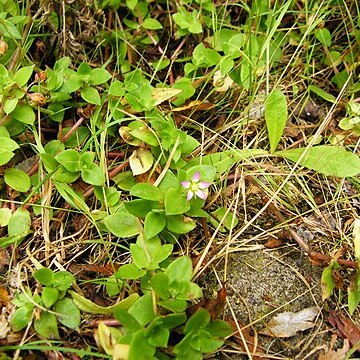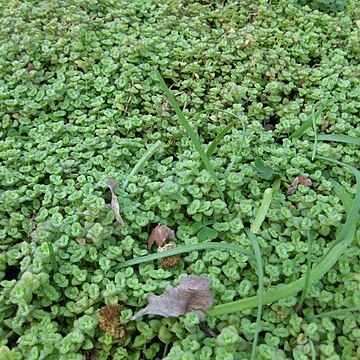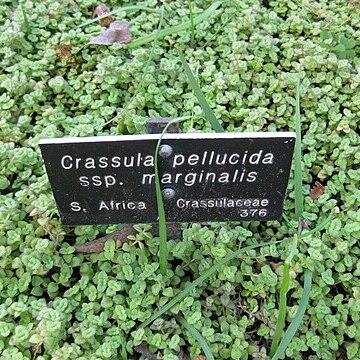Perennial, succulent herb, decumbent or prostrate branches ± 0.01-0.25 m long, old leaves not deciduous, adventitious roots at nodes, root swollen. Leaves sessile, cuneate to subpetiolate, constricted to base and fused in pairs, lanceolate-ovate to elliptic, 10-25 x 5-12 mm, sharply acute, glabrous, green, sometimes with brown stripes and colourless margins. Inflorescence 1-3 terminal dichasia appearing umbellate, fascicled or a single flower. Calyx sharply acute, colourless point, fleshy with membranous margins, green to colourless. Corolla star-shaped, scarcely fused, white tinged pink; lobes elliptic to oblanceolate, 3-5 mm long, sharply acute, without dorsal appendage.
Sprawling perennial, sometimes annual. Leaves opposite, mostly sessile, elliptic to oblanceolate, margin colourless or red. Flowers in terminal clusters, sometimes solitary, stellate, white, often tinged pink, petals 3-5 mm long.
A sprawling herb. The stems can be 60 cm long.



